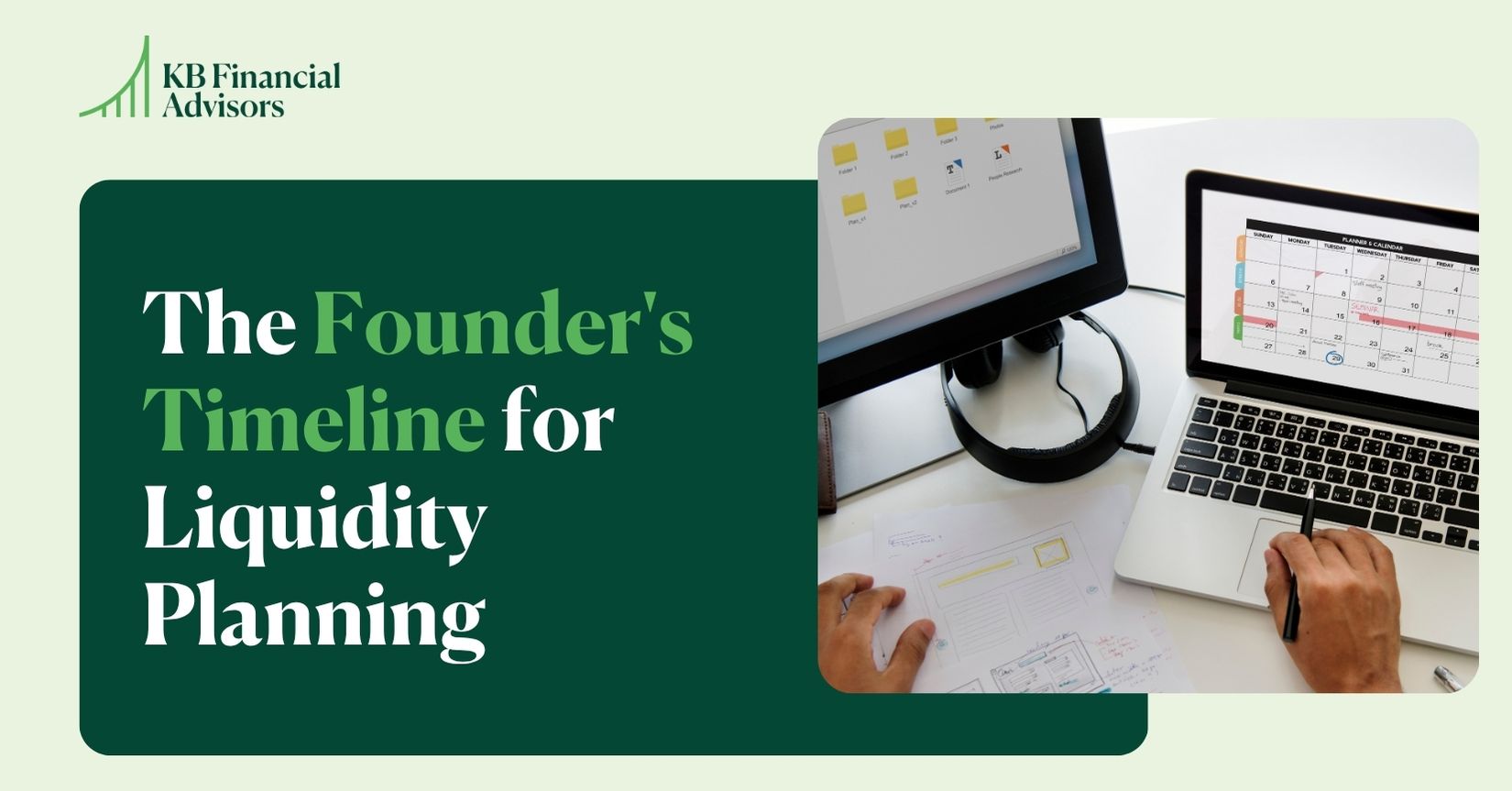When you work in tech, you usually fall in one of two camps:
1) A startup employee
2) A “big tech” employee
If you’re in big tech, you know there’s nothing quite like working for a big tech company like Microsoft, Amazon, Google, or Facebook. They’re household names all over the world, and they’re resume GOLD should you ever choose to get a new job.
The downside, though, is that there’s no big liquidity event like an IPO to look forward to, and you don’t get stock option plans like those in startup tech do.
However, whatever big tech lacks in liquidity and “one day” wealth potential, it can seriously make up for in compensation and benefits, which are a huge boost to your long term savings. In this post, we’re going to explore how to make the most of those benefits to build wealth and gain financial independence… even without the promise of a big payday in the future.
Step One: Review Your Compensation Letter
Since big tech companies can afford higher salaries, one of the best ways for you to build wealth and achieve financial independence is to have a solid long term savings plan… which starts with your basic compensation.
Usually, when someone moves from a startup company to a big tech company, there’s a big increase in salary and RSU compensation, which presents the best opportunity possible to save more money. (You’re already accustomed to living on your old salary, so the additional money can be funneled towards wealth-building.)

If you’ve recently been hired into big tech, you should have received this letter when you were hired. If you’ve been working for your company for a while, you’ll usually receive it towards the end of the year.
This letter outlines three things:
- Salary
- AKA, what you receive in your paycheck every other week.
- Bonus
- Most often, this is expressed as a target percentage of your salary in the compensation letter. The bonus is not guaranteed, and can ultimately be more or less than the target, depending on how the company performs. These are usually paid in the spring.
- RSU
- Since your company is publicly traded, you’ll likely receive RSU (restricted stock units). Their value is taxed just like ordinary income (your salary + bonus), but it’s in the form of shares of your company stock that you’ll have to sell to cash in on.
- In your compensation letter, these are usually expressed as a total dollar amount that’s converted into shares… so you could end up with more or less value here depending on how your company performs in the stock market.
Anytime I work with big tech employees, a big part of our initial work is reviewing their compensation letters and putting together a plan to best convert their compensation into long term savings. (Which I’ll outline in the next steps.)
As my clients who work in big tech climb the ladder and get promoted, their compensation tends to shift from salary to being more focused on their annual bonuses and RSU. If they’re proactive, this is an incredible opportunity for wealth-building because they get to save more from the infrequent-yet-large cash infusions, and can still have their reliable salary for their day-to-day living and monthly savings.
The key here, though, is being proactive with your planning and your saving, which I’ve got for you in the next steps:
Step Two: Review Your Available Long Term Savings Vehicles
After your compensation, the next big benefit the company will have for you are savings vehicles. These can come in many different forms, including:
- 401(k)
- Either a pre-tax or Roth option
- Health Savings Account
- Employee Stock Purchase Plan
- After-tax 401(k)
- Deferred Compensation Plan
Look over your benefits to see exactly which ones are available to you, and at what financial capacity.
Step Three: Create a Yearly Savings Plan
As a financial planner, the bulk of my work with big tech employees involves helping them save as much money as possible into the right savings vehicles. Once that’s done, we increase the amount of savings over time through their future promotions or job changes that result in higher salaries.
There are A LOT of moving parts here, and I see it like putting together and maintaining a well-oiled, efficient machine.
Our raw materials before we start building this machine are your different types of compensation: your salary, your bonuses, and your RSU.
After we take out what’s needed for your taxes and living expenses, we’re left with a pool of cash that we have to decide how to allocate. These are the different places (machine parts) we can allocate that money to:
Your 401(k)
This is always at the top of the list, and I always suggest making your maximum pre-tax contributions, assuming your federal tax rate is over 24%, so that the contributions are tax-free.
The idea is to front-load your contributions to your 401(k), so that you max out your contributions during the first six months, instead of spacing out your contributions so you don’t max out until December.
By front-loading your investments in your 401(k), you get those dollars invested sooner, which leads to a larger account balance at retirement than if you’d done evenly distributed contributions over all 12 months.
Employee Stock Purchase Plans (ESPP)
The second machine part we want to allocate money to is the ESPP, which lets you contribute up to 15% of each paycheck. Then, two times each year, the dollars inside your ESPP are used to purchase company stock at a discount.
Once these shares are purchased, I recommend selling them ASAP. Once that sale is done, you can take the cash you earned and put it into another investment account.
Health Savings Account (HSA)
After your 401(k) and ESPP, you get to make tax-free contributions to your HSA to cover medical expenses… but that’s not what I want you to do.
Instead, I want you to use the HSA strictly as a tax-deferred investment vehicle. You can make contributions into your HSA right now to get the deduction, which lowers your taxable income each year you make those contributions. Then do your best to pay your medical expenses out-of-pocket, with after-tax dollars.
Over time, and when you max out your annual, allowable HSA savings, you can build up a considerable nest egg of funds to use in your retirement. (You can withdraw the money before retirement too, but if you use it for non-medical expenses, it’ll be taxed like regular income plus a penalty for early withdrawal. However, once you turn 65, you can withdraw the money for any purpose without the penalty.)
The key here, though, is making sure this approach makes sense for you.
Often, I’ll help my clients do a numbers-based comparison of how much they’d normally spend if they used a PPO plan with co-pays, or if they bought a high-deductible health insurance plan, maxed out their HSA contribution, and paid their medical expenses out of pocket.
It won’t make sense for everyone, and it’ll depend on how your company structures their HSA offers, but it’s definitely something to consider.
After-Tax 401(k) with Intra-Plan Roth Conversion
Next, we start allocating money to your after-tax 401(k) with Intra-Plan Roth Conversion.
Most tech employees are aware of the 401(k) pre-tax or Roth contribution limit, which is $19,500 for 2020. But what a lot of them don’t realize is that your 401(k) is a defined contribution plan that has a second limit.
After you account for your employee contribution (pre-tax or Roth) and your employer match, you may be able to make some after-tax contributions as well.
Sometimes, they’re significant amounts like $20,000 or more.
You don’t get any tax deductions for these after-tax retirement contributions, but they do create more tax-deferred dollars, which means you don’t have to pay taxes on their growth until you withdraw the money in the future. As you can imagine, not having to pay taxes on the gains now can really help accelerate your long term savings plan.
Plus, the intra-plan Roth conversion feature if available creates the opportunity for all of these dollars plus the earnings and growth to be tax-free.
Deferred Compensation Plan
The last thing I do in the well-oiled savings machine for big-tech employees is to set up a deferred compensation plan.
A deferred compensation plan is exactly what it sounds like: it lets you defer a portion of your compensation to a later date. And while every deferred compensation plan is different, a common version at many big tech companies is to let you defer your annual bonus (all or a portion) for five years.
During that five-year deferral period, you can choose between different investment options for the amount of deferred income to have the amount of your deferred compensation indexed against the value of certain investments.
An important thing to know, though, is that deferred compensation is not like a 401(k) or an ESPP, in that you’re not redirecting the dollars into an account you own… you’re simply telling the company that instead of paying you now, they should pay you five years from now.
Also, these dollars aren’t actually invested in anything. The investment options you choose simply indexes what you defer against an investment of your choice, like the S&P 500. Then, once the deferral period is over, you get the original amount you deferred plus the earnings and growth if the deferred amount had been invested.
As you can imagine, this is an incredible way to automate your savings (you don’t spend what you don’t receive), AND you get to save money on taxes now, since you’re not taxed on the compensation until you actually receive it.
Step Four: Create & Implement Your Long Term Savings Plan on a Year-by-Year Basis
Knowing your compensation and the different investment vehicles you have available to build your own well-oiled savings and wealth-building machine, we can start implementing your custom plan.
First, we’ll look at how much you need for living expenses and taxes, and make sure enough of each paycheck gets set aside to cover that.
Then we’ll look at how much you’ve been saving before now, and how much you need to be saving to be on track for your retirement, financial freedom, and lifestyle goals.
Then, we come up with your personalized priority list of what to funnel money to… like front-loading as much as possible into your pre-tax 401(k), your ESPP, and so on.
Then, we keep allocating money into your different savings vehicles for your best savings and wealth-growing potential until we get to the end of what’s available in your paychecks, bonuses, and RSU money.
Step Five: Monitor Your Financial Status & Make Needed Adjustments
As your savings grow, we’ll keep an eye on your accounts and the changes in compensation, and make as many money-wise adjustments to your savings plan as needed.
The goal is to save as much money as possible, while living a comfortable life and not having to feel like a pauper.
Successful Long Term Savings Plans Have A LOT of Moving Parts
Just like a well-oiled machine, the way you save to build long-term wealth as a big tech employee will have a lot of moving parts.
That’s not necessarily a bad thing, but it does mean that there needs to be a lot of careful financial and tax planning involved. This way, you don’t accidentally end up with a too-big tax bill or missing out on a savings vehicle that could save you a lot of money in your later years.
To talk to me or another highly experienced member of my team about what we can do for your long term savings plan, book a call with us here.



